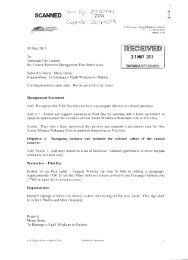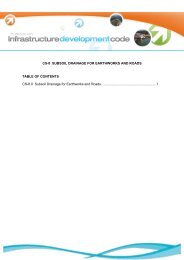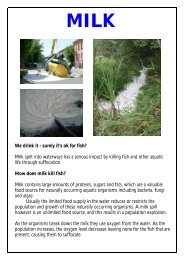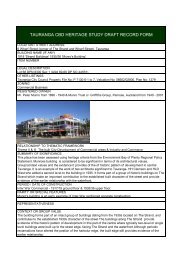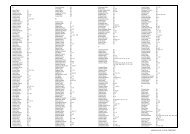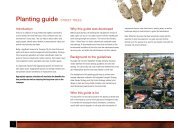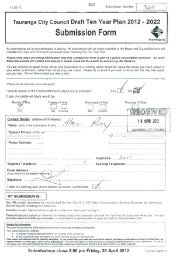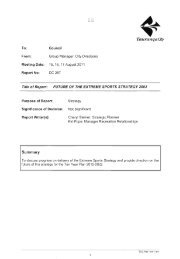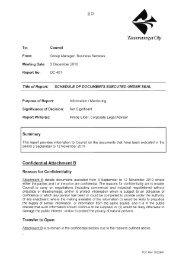Detailed Stormwater Management Practice Design - Tauranga City ...
Detailed Stormwater Management Practice Design - Tauranga City ...
Detailed Stormwater Management Practice Design - Tauranga City ...
Create successful ePaper yourself
Turn your PDF publications into a flip-book with our unique Google optimized e-Paper software.
For further information on Hydrological <strong>Design</strong> for the control of Water Quality see<br />
section 7.<br />
SMG-9.4.6.5 Channel Erosion Protection<br />
The objective here is to maintain or improve the in-stream channel stability to protect<br />
ecological values of the stream and reduce sedimentation downstream.<br />
More recently wet and dry pond designs have been modified to extend the detention<br />
time of runoff and thereby increasing particulate contaminant settling and minimizing<br />
downstream channel erosion.<br />
For further information on Hydrological <strong>Design</strong> for the control of Erosion see section<br />
7.<br />
SMG-9.4.6.6 Constraints on the Use of Ponds<br />
The following relates to pond use constraints:<br />
a) Dry Ponds:<br />
i) Need fairly porous soils or subsurface drainage to assure that the bottom<br />
stays dry between storms<br />
ii) Not suitable in areas with high water tables or shallow depth to bedrock<br />
iii) Not suitable on fill sites or steep slopes unless geotechnically checked<br />
iv) May not be suitable if receiving water is temperature sensitive as detention<br />
ponds do not detain water long enough to reduce temperatures from<br />
impervious surfaces.<br />
b) Wet Ponds:<br />
i) Not suitable on fill sites or near steep slopes unless geotechnically<br />
checked<br />
ii) May need supplemental water supply or liner system to maintain<br />
permanent pool if not dug into the groundwater<br />
iii) Minimum contributing drainage area of 6 hectares is needed to maintain<br />
the permanent pool<br />
iv) Not feasible in very dense urban areas or areas with high land costs due<br />
to large surface area needs<br />
v) May not be suitable if receiving water is temperature sensitive due to<br />
warming of pond surface area.<br />
vi) Safety issues need to be addressed, depending on normal pool depth<br />
Dry flood detention ponds are not normally recommended for stormwater<br />
management systems. They have on-going maintenance needs because standing<br />
water in areas where positive drainage is impeded may cause mosquito problems<br />
and their overall performance for water quality treatment is less than provided by wet<br />
ponds.<br />
Page 49 Updated 01/11/2012



